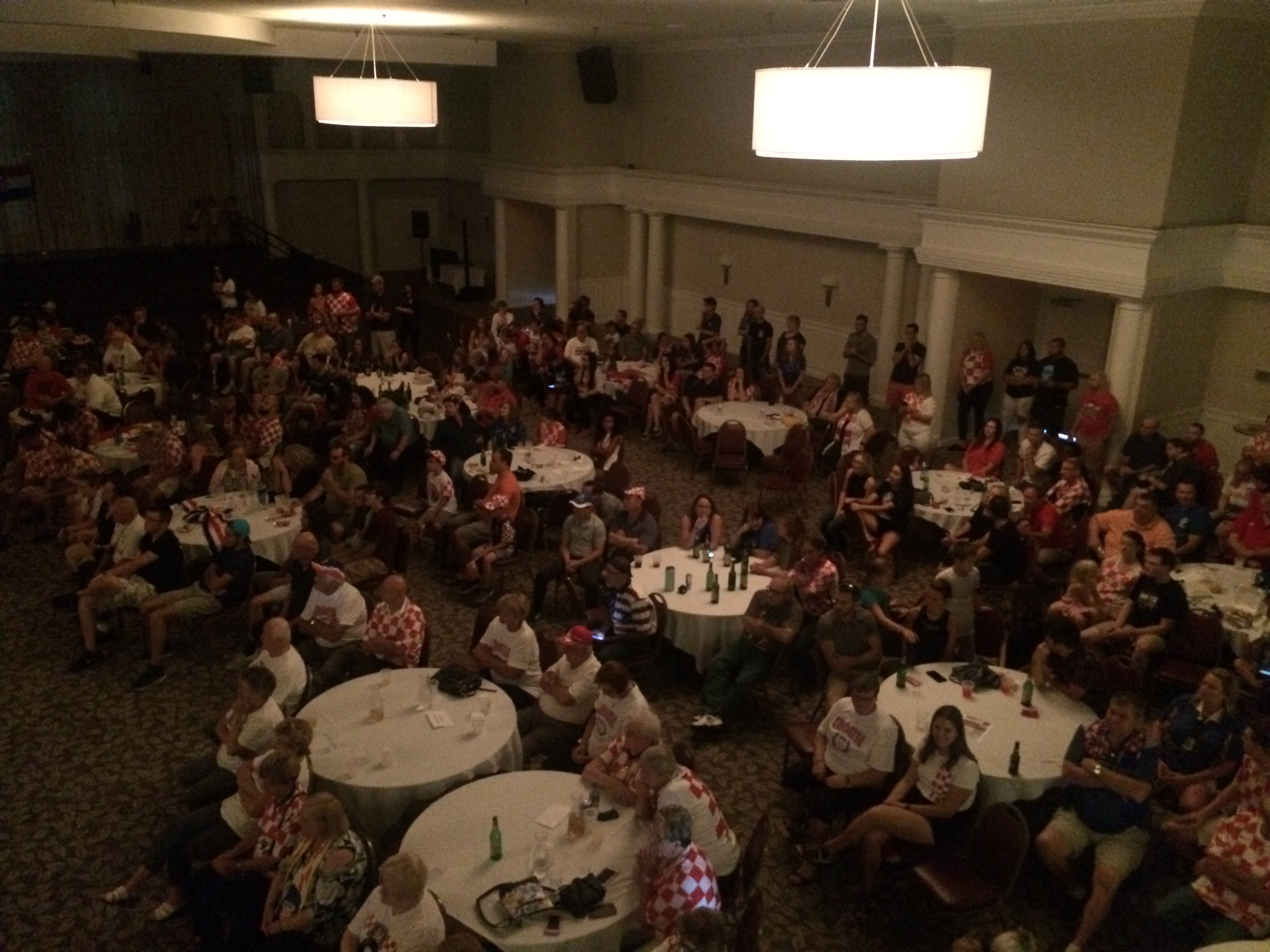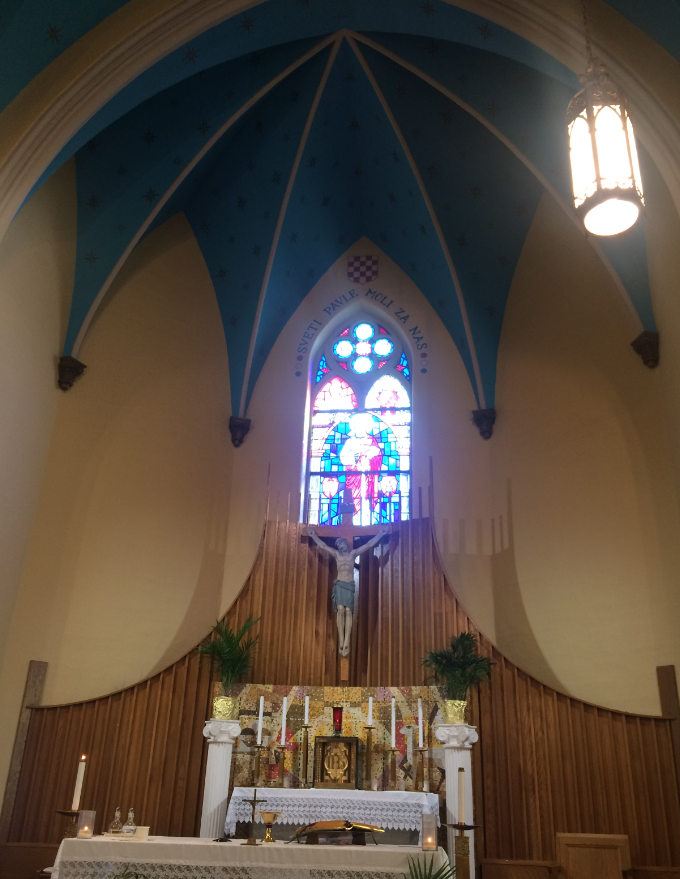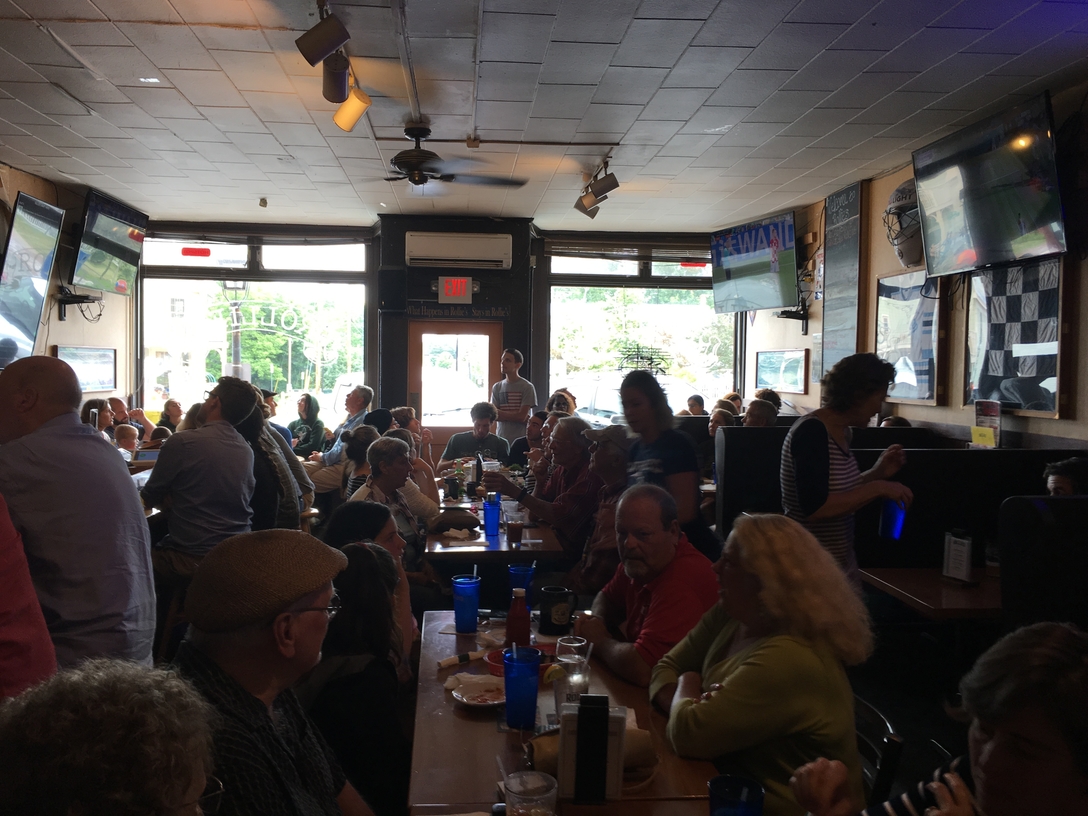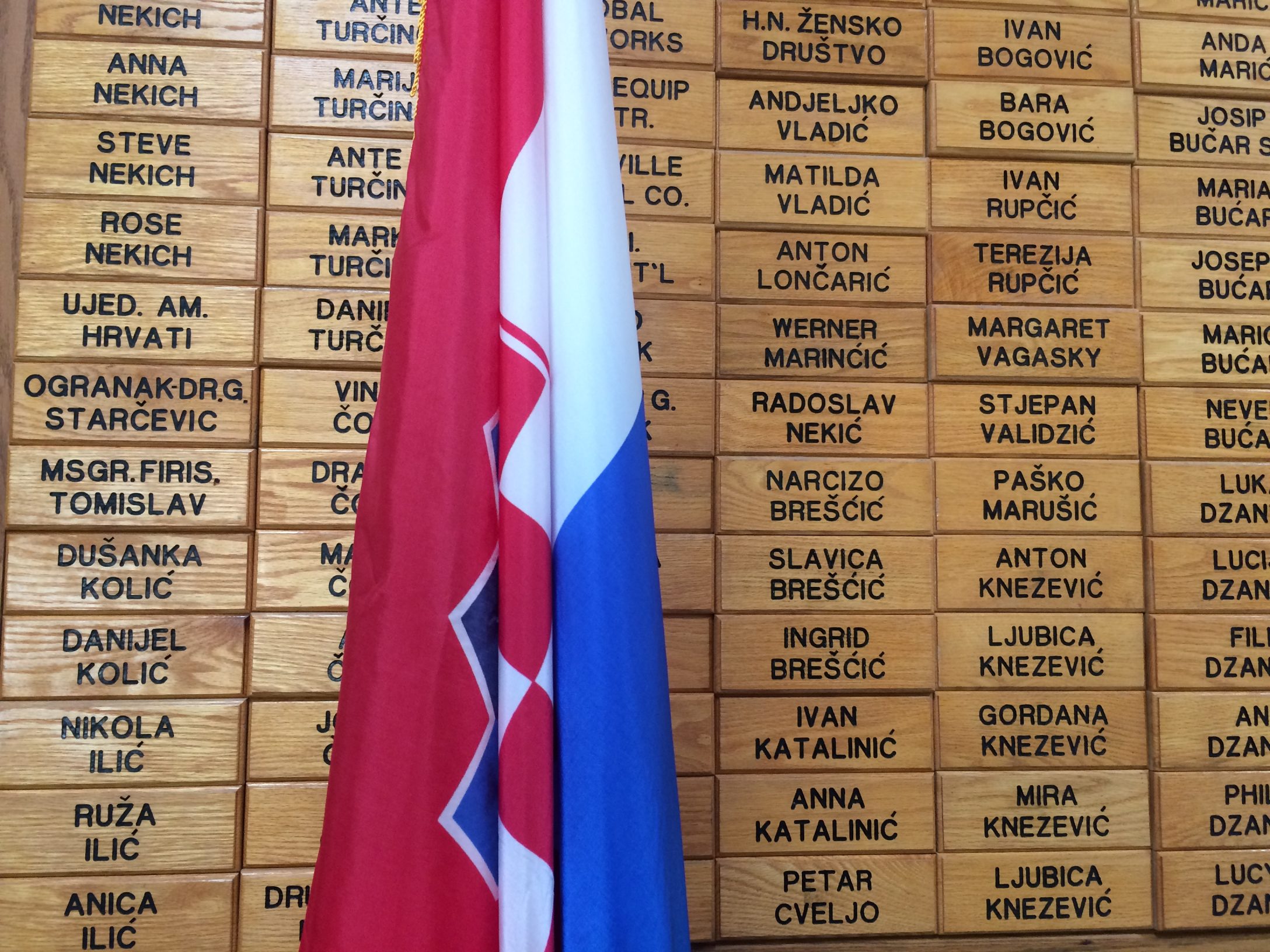11 AM. Matthew Kocsan. American-Croatian Lodge and St. Paul’s Roman Catholic Church. Cleveland, Ohio, USA.
It looks like a wedding reception that has spiraled out of control, and functions a bit like one, too: an hour before the match began, the American-Croatian Lodge, in Eastlake, Ohio—just less than half an hour east of downtown Cleveland, an area that boasts one of the larger Croatian ethnic communities in the United States—opened its doors at 10:00, inaugurating a kind of cocktail hour. The lodge, I’m told, is owned by local shareholders from the Croatian community, and the organizers of the event laid out seats for 300. One of the operators of the lodge, Tony Radan, tells me later, looking down with a bird’s-eye view on the proceedings, that there are probably closer to 400 in the great banquet hall.

The lights are dimmed to project the game onto a large canvas, allowing the crowd something like privacy after kickoff: to be involved in the game, but not ruled by it. It was only when Croatia attacks that the room really comes alive, and with Ivan Perisic’s equalizing strike in the twenty-eighth minute, the room finally gushes. Cheers cascade over the hall with every replay of Croatia’s glorious, first goal.

I began the day at St. Paul’s Roman Catholic Church, a traditionally Croatian parish near the corner of E. 40th and St. Clair. If you can imagine a central European ethnic group, it probably has a venerable church somewhere on the near east or west side of Cleveland. It seemed an appropriate place to begin the day Croatia might conquer the world. Their liturgy conducted in Croatian, though, this seems less about the world than a conversation with and obligation to their families and community. Just as St. Paul’s finds the energy and the congregation to support two Sunday Masses in Croatian each week, it was difficult not to sense, after I arrived at and toured the lodge—in a small museum of Croatian Heritage, featuring small replicas of the work of Croatian master sculptor Ivan Mestrovic, or in the voice of the man who tells me, as I’m waiting to speak to someone else, “well, I’m here every day, too”—that the game was important, but also incidental.
It was, in the end France’s day, but the Croatians in Cleveland cheered at the conclusion of the match and, some of them, as you might expect after a successful wedding, too, made their way to the dance floor.
11 AM. Willy Blackmore. Rollie’s. Belfast, Me.
More than anything, I watched World Cup games on my phone this year. I remember when my dad got a new TV once, probably in the late 1990s, and it had a very fancy new feature for watching live sports: Picture-in-picture viewing. You could watch one game on the screen, and keep a small thumbnail of another in the corner. I kept thinking of that as I worked on my laptop with my phone propped up against the bottom corner of the screen. I caught a few matches at bars as well, including the final at a sports bar in Belfast, Maine, which was packed with fans that, despite the region’s Acadian roots, heavily favored Croatia. I was sitting with my friend Geir and his son, Alexander, who is five-and-a-half, and was watching his first-ever final.
Though I remember a few things about 1994—mainly Carlos Valderrama’s hair, Alexi Lalas’ facial hair, and the impossible-to-understand death of Andrés Escobar—I watched the World Cup in earnest for the first time in 2002, during the summer after my junior year in high school. My friend Carlo, who was in college, was and remains a dedicated soccer fan, and he made his house open for any and all of the games—which, considering the time change between Iowa and the stadiums in Korean and Japan, made for some odd hours. On weekends, the crowd would sometimes be a mix between those who were just getting up, and those who were quite yet going to bed.
Four years later, I watched games at a bar in Chicago, where I was staying while I photographed graduations for work, and back in Iowa City, where I lived. Four years after that, I was in Los Angeles, and again another four years later, when I worked in an actual newsroom, with two TVs hanging in front of my desk. Usually, the looming screens were a nuisance, but I watched nearly every game played on week days, and on the weekends would watch with my infant daughter on my lap. This summer, she only really wanted to talk about the fact that the US Women’s National Team—the “girl’s team”—is the better than the “boy’s team.” She was excited for this tournament to wrap up so the women could start to play.

At the bar in Belfast, Alex was rapt for much of the first half, but got squirmy in the second 45. I tried to distract him in a number of ways, with varying degrees of success. Toward the end I asked him a question: “Do you know how old you’ll be when this happens again?” He looked at me. “You’ll be nine-and-a-half,” I said. It was hard for him to believe; hard for Geir and I to believe. I added, “So can you wait for another 15 minutes?”
Later, I asked Alex if he could imagine what he would be like when he was almost 10. He thought for a second, smiled, and said that he would be faster than his Dad.






